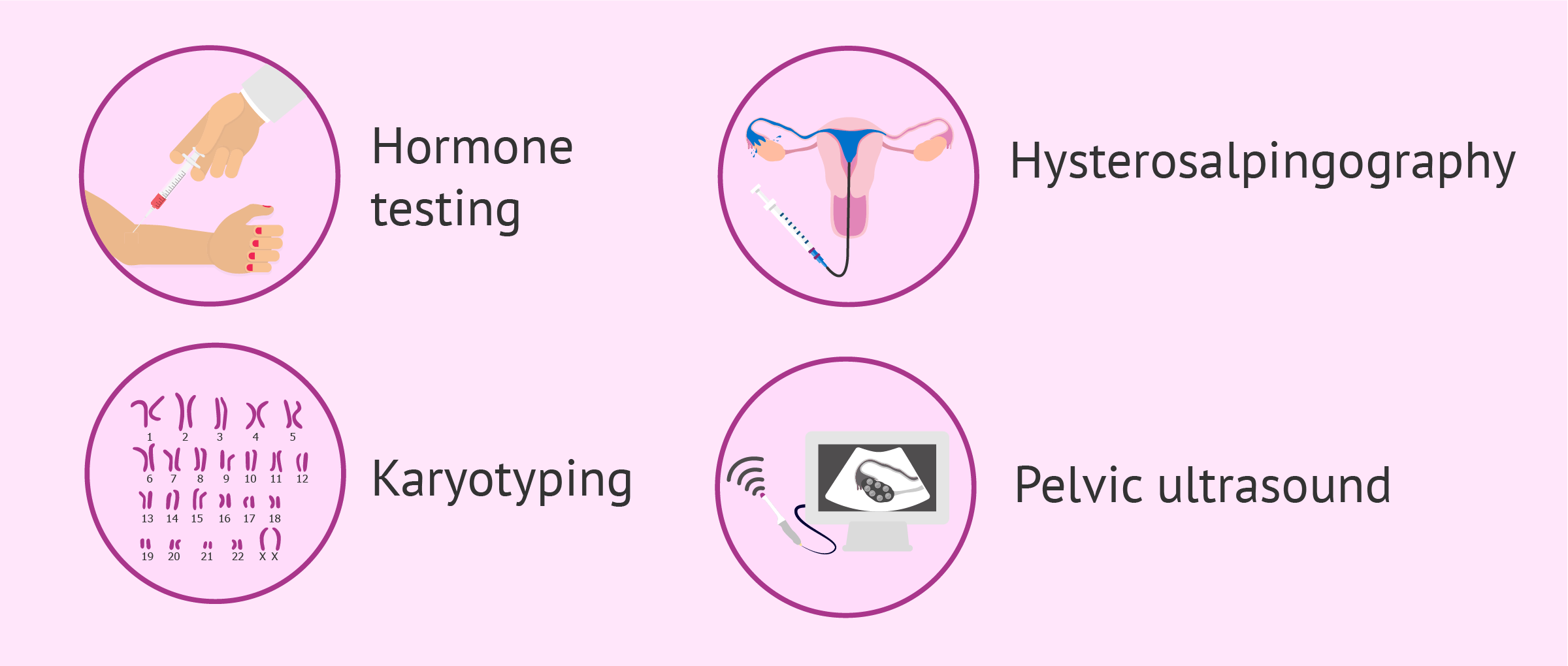Amongst the tests run to women who visit a fertility specialist for the first time, we include hormone blood tests, chromosome tests, a hysterosalpingography, and some gynecologist test such as a pelvic ultrasound.
Below you can find all of them described in detail:
- Hormonal tests
- Hormones such as FSH, estradiol (E2), LH, progesterone, and AMH (anti-müllerian hormone), which are the main female sex hormones, are evaluated to check the functionality of the ovaries and the pituitary gland.
- Hysterosalpingography (HCG)
- Also known as uterosalpingography, this diagnostic test is used to see the patient's womb and its structure, as well as to check whether the Fallopian tubes are working properly. They are observed by means of X-ray technology and also using a fluid that contains a dye. HCG allows the specialist to detect several problems, including uterine malformations, salpingitis, hydrosalpinx, myomas, polyps, etc.
- Karyotyping
- This chromosome test is used to detect potential abnormalities that could be compromising the patient's fertility, either related to the number of chromosomes or to their structure. A blood test is required.
- Gynecological tests
- Including a cytology test and a pelvic ultrasound. A cytology test, commonly known as pap smear, the gynecologist can check whether there exists an infection or alteration in the cells of the cervix. With a pelvic ultrasound, the doctor can see if there exists a malformation, and also measure the number of antral follicles.
Typically, all these tests are done when the women visits the fertility specialists for the first time after detecting certain signs that she might be infertile, after one year trying to conceive (TTC) unsuccessfully. In women over age 36, they are recommended to visit the specialist after 6 months TTC.
Read the full article on: Female Fertility Tests – How Do You Know if You Can’t Get Pregnant? ( 82).
By Joel G. Brasch M.D. (gynecologist), Óscar Oviedo Moreno M.D. (gynecologist), Sara Salgado B.Sc., M.Sc. (embryologist) and Sandra Fernández B.A., M.A. (fertility counselor).
Last Update: 10/23/2017
